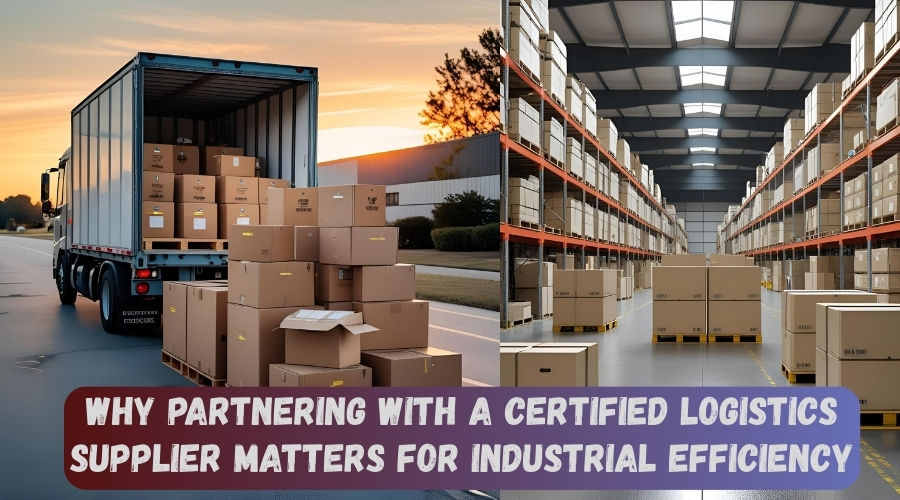Why Working with a Certified Logistics Equipment Provider Matters
- thautomate
- Jun 3
- 4 min read

Table of Contents
Introduction
What Is a Logistics Equipment Provider?
Benefits of Working with a Certified Logistics Equipment Provider
From Tools to Transport: How the Right Logistics Equipment Manufacturer Enhances Workshop Efficiency
Choosing Between a Logistics Equipment Supplier vs. Provider: What Bulk Buyers Must Know
Top 6 Tool Cabinets Every Logistics Hub Should Invest In (And Where to Get Them Wholesale)
How to Streamline Warehouse Storage and Distribution
Market Trends: Growing Demand for Logistics Equipment
Conclusion
FAQs
1. Introduction
In today’s fast-moving industrial landscape, businesses must rely on efficiency, precision, and scalability. One of the pillars supporting this structure is the logistics equipment provider—a partner that supplies, customizes, and maintains essential warehouse and transport tools.
2. What Is a Logistics Equipment Provider?
A logistics equipment provider is a company that offers a comprehensive range of solutions from storage systems like material handling, packaging, and transportation tools. Their role is not limited to supplying equipment but extends to system integration, after-sales service, and training.
3. Benefits of Working with a Certified Logistics Equipment Provider
Key Points:
Assured product quality and compliance
Access to the latest technologies
Integrated solutions across the supply chain
Reliable maintenance and customer service
Customization based on operational needs
Certified providers adhere to ISO, CE, and other international standards. This guarantees durability, safety, and environmental responsibility—crucial for industries such as automotive, pharma, and e-commerce.
Stat to Note: Companies that work with certified logistics partners report up to 30% improvement in warehouse efficiency (Source: Deloitte Logistics Report 2024).
4. From Tools to Transport: How the Right Logistics Equipment Manufacturer Enhances Workshop Efficiency
A certified logistics equipment manufacturer plays a crucial role in optimizing industrial workflows. Their capabilities include:
Precision Engineering: CNC-machined equipment for exact warehouse fits
Custom Fabrication: Cabinets, conveyors, and trolleys tailored to workspace dimensions
IoT Integration: Smart cabinets with inventory tracking features
Energy Efficiency: Eco-designed machines with lower operational costs
Manufacturers that prioritize automation and modular design help reduce handling time by 40% and error rates by 25%, improving ROI significantly.
5. Choosing Between a Logistics Equipment Supplier vs. Provider: What Bulk Buyers Must Know
Many confuse a logistics equipment supplier with a logistics equipment provider, but they serve different purposes:
Feature | Supplier | Provider |
Role | Delivers ready-made products | Offers full-scale solutions |
Support | Limited to supply | Includes maintenance & integration |
Customization | Rare | Common |
Long-Term Partnership | No | Yes |
Bulk buyers should opt for providers when the need involves custom solutions, long-term growth, and scalable warehouse operations.
6. Top 6 Tool Cabinets Every Logistics Hub Should Invest In (And Where to Get Them Wholesale)
Proper storage equals improved workflow. Here are six must-have cabinets for every logistics center:
1. Heavy-Duty Mobile Tool Cabinet
Steel frame, lockable drawers, swivel wheels
Best for on-the-go maintenance tools
2. Wall-Mounted Modular Cabinet
Space-saving vertical design
Ideal for narrow aisles
3. Drawer Stack Cabinets
Multiple compartments, ideal for categorizing tools
Common in automotive hubs
4. Smart Tool Cabinets
Equipped with RFID, digital locks
Excellent for inventory management
5. Open Shelf Industrial Cabinets
Quick-access design for high-frequency tools
Used in sorting & packaging zones
6. Anti-Static Tool Cabinets
Protect sensitive equipment in electronics & pharma
Grounding-enabled material
These cabinets are available at wholesale rates through certified logistics equipment manufacturers and global tool cabinet exporters.
7. How to Streamline Warehouse Storage and Distribution
Key Strategies:
Slotting Optimization: Store items based on picking frequency
Zoning: Separate inbound, outbound, and packing areas
Use Vertical Space: Employ high-density modular racking systems
Automation: Implement conveyor belts and robotics for repetitive tasks
Integrated Tool Cabinets: Place essential tools near workstations to cut down retrieval time
ROI Insight: Warehouses using strategic layout designs and certified equipment providers reduce handling time by 30–50% over 12 months.
8. Market Trends: Growing Demand for Logistics Equipment
Let’s look at the industry growth using a graph based on 2020–2025 data:
Year | Global Market Size (USD Billion) |
2020 | 30.1 |
2021 | 33.2 |
2022 | 36.9 |
2023 | 40.5 |
2024 | 44.7 |
2025* | 49.3 (projected) |
Source: Statista & IBISWorld Reports, 2024
The rising demand is driven by e-commerce logistics, cold chain expansion, and automation trends. Certified providers are leading the supply of smart, efficient systems to meet this global growth.
9. Conclusion
Whether you run a warehouse, a distribution center, or an industrial workshop, partnering with a certified logistics equipment provider gives your business a competitive edge. From state-of-the-art tool cabinets to intelligent handling systems, they deliver more than products. They provide scalable, integrated solutions.
10. Frequently Asked Questions (FAQ’s)
Q1. What’s the difference between a logistics equipment provider and supplier?
A supplier delivers ready-made products. A provider offers complete solutions including customization, maintenance, and system integration.
Q2. Why is certification important in logistics equipment?
Certification ensures that the products meet global safety, durability, and environmental standards—important for compliance and insurance.
Q3. Can tool cabinets be customized for my warehouse needs?
Yes. Most logistics equipment manufacturers offer custom-built cabinets based on layout, function, and load-bearing requirements.
Q4. Is it more cost-effective to buy tool cabinets wholesale?
Absolutely. Wholesale pricing from manufacturers or certified providers helps reduce unit costs, especially for bulk or multi-site operations.
Q5. How often should logistics equipment be maintained?
Preventive maintenance should be done quarterly. High-usage areas may require monthly checks to ensure safety and efficiency.



Comments